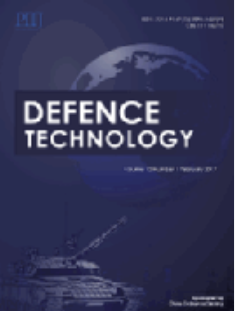Experimental and numerical study on external explosions of cylindrical versus spherical charges at tunnel entrance
IF 5.9
Q1 ENGINEERING, MULTIDISCIPLINARY
引用次数: 0
Abstract
Most of the existing studies on tunnel blast wave are based on spherical or grouped charges, however, conventional weapons are mostly cylindrical rather than spherical. In order to analyze the impact of cylindrical charges on the tunnel blast wave loads and to develop a quantitative calculation method, this study carried out experimental and numerical research. Initially, external explosion experiments were conducted using both 35 kg spherical charges and cylindrical charges with aspect ratio of 4.8 at two different distances from the tunnel entrance. Comparative analysis of the blast wave parameters in the tunnel revealed that the explosive equivalent of the cylindrical charges was significantly higher than that of the spherical charges. To address this, an equivalent coefficient κ based on the spherical charges was proposed for the cylindrical charges. Subsequently, numerical simulations were conducted for the experimental conditions, and the numerical simulation results match the experiments well. Through numerical calculations, the reliability of the equivalent coefficient κ under the experimental conditions was verified, and comparison analysis indicated that the explosion energy of cylindrical charges spreads more radially, resulting in more explosion energy entering the tunnel, which is the fundamental reason for the increase in tunnel blast wave loads. Additionally, analyzing the explosion energy ratio entering the tunnel is an effective method for calculating the equivalent coefficient κ. Finally, through more than one hundred sets of numerical calculation results, the impact of the proportional distance λ and the ratio of charge mass to the tunnel cross-section dimension φ on the equivalence coefficients κ was investigated. An empirical formula for the equivalence coefficient κ was derived through fitting, and the accuracy of the formula was validated through literature experimental results. The research findings of this paper will provide valuable guidance for the calculation of blast wave loads in tunnel.

隧道入口圆柱装药与球形装药外爆的实验与数值研究
现有的坑道爆震波研究大多是基于球形或分组装药,而传统武器大多是圆柱形而非球形。为了分析筒形装药对隧道爆炸波载荷的影响,建立定量的计算方法,本研究进行了实验和数值研究。首先,在距离隧道入口两种不同距离处,分别使用35 kg的球形装药和展弦比为4.8的圆柱形装药进行了外爆实验。对隧道内冲击波参数的对比分析表明,柱状装药的爆炸当量明显高于球形装药。为了解决这个问题,提出了一个基于球形电荷的等效系数κ。随后对实验条件进行了数值模拟,数值模拟结果与实验结果吻合较好。通过数值计算,验证了等效系数κ在实验条件下的可靠性,对比分析表明,圆柱形装药的爆炸能量更向径向扩散,导致更多的爆炸能量进入隧道,这是隧道爆炸波载荷增加的根本原因。另外,分析进入巷道的爆炸能量比是计算等效系数κ的有效方法。最后,通过一百多组数值计算结果,研究了比例距离λ和电荷质量与隧道截面尺寸之比φ对等效系数κ的影响。通过拟合得到等效系数κ的经验公式,并通过文献实验结果验证公式的准确性。本文的研究成果将对隧道爆炸冲击波荷载的计算提供有价值的指导。
本文章由计算机程序翻译,如有差异,请以英文原文为准。
求助全文
约1分钟内获得全文
求助全文
来源期刊

Defence Technology(防务技术)
Mechanical Engineering, Control and Systems Engineering, Industrial and Manufacturing Engineering
CiteScore
8.70
自引率
0.00%
发文量
728
审稿时长
25 days
期刊介绍:
Defence Technology, a peer reviewed journal, is published monthly and aims to become the best international academic exchange platform for the research related to defence technology. It publishes original research papers having direct bearing on defence, with a balanced coverage on analytical, experimental, numerical simulation and applied investigations. It covers various disciplines of science, technology and engineering.
 求助内容:
求助内容: 应助结果提醒方式:
应助结果提醒方式:


